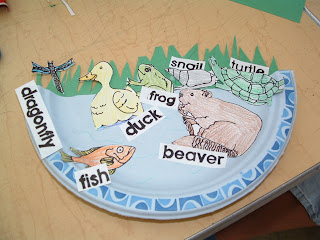Haralson County Courthouse
ØFree of cost to students & chaperones
ØBathrooms: yes
ØTour guide provided
ØSelf-tour allowed
ØLunch: outside on grass or in gazebo
ØMax #: 65
ØLocation: Buchanan, GA
ØGrade/Age: 10 yrs. Old
ØChaperone-student ratio: 1:10
Piggly Wiggly
ØFree of cost
ØBathrooms provided
ØTour guide required
ØMax #: one class
ØLunch: on bus or at local park
ØLocation: Villa Rica, GA
ØAge/Grade: 3rd grade+
ØChaperone-student ratio: 1:10
Turner Field
ØArts Tour
ØCost per student: $5
ØCost per chaperone: $7
ØBathrooms provided
ØTour guide required
ØLunch: In stadium
ØLocation: Atlanta
ØAge/grade: 4th+
ØChaperone-student ratio: 1:10
Thursday, July 3, 2008
Group Lesson Plan
Constellation Creation
Grade level: 2
Class Time: 30-40 minutes
Concepts: Science: Constellations
Objective: Students will be able to explain constellations, why they were created, and make a model of their own constellation to show the nature of the stars.
Motivation: Creating their own constellation
Vocabulary: Constellation, galaxy, Milky Way, Sundial.
Instructional Strategies:
Read the book about the night sky
Ask “has anyone ever seen a constellation at night when they were stargazing?”
Tell them they are making their own constellations with construction paper, rice and glue.
Make the constellation anyway you want it, use your imagination and be creative.
Modifications: I would modify this lesson by offering one on one time or peer help for those who need it.
Assessment: The student’s artwork and our group conversations about what they made.
Materials/Supplies: White rice, 1-oz portion cups, black 12” x 18” construction paper, white glue, white crayons, and A Sky Full of Stars book.
Resources: Gibbons, Gail. Stargazers. Holiday House. New York. 1992.
Closing Statement: This lesson doesn’t end here, there is so much out there to learn, so reach for the stars!
Grade level: 2
Class Time: 30-40 minutes
Concepts: Science: Constellations
Objective: Students will be able to explain constellations, why they were created, and make a model of their own constellation to show the nature of the stars.
Motivation: Creating their own constellation
Vocabulary: Constellation, galaxy, Milky Way, Sundial.
Instructional Strategies:
Read the book about the night sky
Ask “has anyone ever seen a constellation at night when they were stargazing?”
Tell them they are making their own constellations with construction paper, rice and glue.
Make the constellation anyway you want it, use your imagination and be creative.
Modifications: I would modify this lesson by offering one on one time or peer help for those who need it.
Assessment: The student’s artwork and our group conversations about what they made.
Materials/Supplies: White rice, 1-oz portion cups, black 12” x 18” construction paper, white glue, white crayons, and A Sky Full of Stars book.
Resources: Gibbons, Gail. Stargazers. Holiday House. New York. 1992.
Closing Statement: This lesson doesn’t end here, there is so much out there to learn, so reach for the stars!
Sunday, June 29, 2008
ABC book
New Painting Technique
Lesson Ideas
 Kids use a blank map of Africa to come up with their creation with it. Here, it was used to represent a lake. Other ideas include the head of horse or zebra. Kids could try this with all of the continents.
Kids use a blank map of Africa to come up with their creation with it. Here, it was used to represent a lake. Other ideas include the head of horse or zebra. Kids could try this with all of the continents. This was a lesson about creating collage. The book "The Hungry Caterpillar" was read and used to show how some illustrators use collage as their medium in books.
This was a lesson about creating collage. The book "The Hungry Caterpillar" was read and used to show how some illustrators use collage as their medium in books. This lesson artifact was from a lesson about star constellations. Students use rice and glue to create their own made-up constellation. Great way to incorporate art into science!
This lesson artifact was from a lesson about star constellations. Students use rice and glue to create their own made-up constellation. Great way to incorporate art into science! Lady bug math - such a cute idea! Students make their own lady bug out of construction paper and use raisins to add or subtract the two wings (left and right side).
Lady bug math - such a cute idea! Students make their own lady bug out of construction paper and use raisins to add or subtract the two wings (left and right side). This is a representation of a pond-life habitat. Other habitats can be created using different materials. Kids love it!
This is a representation of a pond-life habitat. Other habitats can be created using different materials. Kids love it! Tree sculpture made out of a wire hanger, wood block and panty hose to go along with "The Giving Tree." So cute!
Tree sculpture made out of a wire hanger, wood block and panty hose to go along with "The Giving Tree." So cute!Philosophy of the Arts in Education
I feel that art is a necessity in schools, especially during the elementary years. As a future educator, I feel that it is my duty to allow my students to be creative and express themselves in their work. To me art should not be an elective that children go to for 30 minutes a day. Instead, art should be integrated into every academic subject to make the material more memorable. I hope to do this in my future elementary classroom. It is so important to teach to BOTH sides of the brain - children retain information and learn much more from the experience if things are taught that way.
Educational Art Websites
www.linerider.com
www.ratemydrawings.com
www.learn-to-draw.com
www.artpad.art.com
www.jacksonpollock.org
www.mrpicassohead.com
www.alifetimeofcolor.com
www.princetonol.com/groups/iad
www.zoopz.com
www.whyville.net
http://www.getty.edu/gettygames/
http://www.nga.gov/kids/kids.htm
http://www.haringkids.com/
http://www.surfnetkids.com/interactiveart.htm
http://www.mowa.org/kids/kids_enter.html
http://smartmuseum.uchicago.edu/smartkids/index.html
http://www.artsconnected.org/toolkit/
http://www.thegalleriesatmoore.org/activities/colorbook.shtml
http://www.metmuseum.org/explore/museumkids.htm
www.virtualartroom.com
www.ratemydrawings.com
www.learn-to-draw.com
www.artpad.art.com
www.jacksonpollock.org
www.mrpicassohead.com
www.alifetimeofcolor.com
www.princetonol.com/groups/iad
www.zoopz.com
www.whyville.net
http://www.getty.edu/gettygames/
http://www.nga.gov/kids/kids.htm
http://www.haringkids.com/
http://www.surfnetkids.com/interactiveart.htm
http://www.mowa.org/kids/kids_enter.html
http://smartmuseum.uchicago.edu/smartkids/index.html
http://www.artsconnected.org/toolkit/
http://www.thegalleriesatmoore.org/activities/colorbook.shtml
http://www.metmuseum.org/explore/museumkids.htm
www.virtualartroom.com
Subscribe to:
Comments (Atom)



